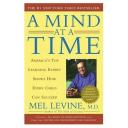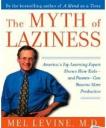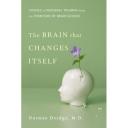 Ready or Not, Here Life Comes is Mel Levine’s most recent book. Published in 2005, it covers a range of topics dealing with preparing young adults (and their parents) for life after high school and college. On January 17th my husband and I had the pleasure of settling in to a packed auditorium where Dr Levine talked about this topic. This was our third time in about eighteen years hearing Dr Levine speak, so we were already familiar with his engaging style. We’ve predisposed to hear his update about the many animals he raises on his farm in North Carolina, among them geese, dogs, swans, peacocks, pheasants, and donkeys, to name a few!
Ready or Not, Here Life Comes is Mel Levine’s most recent book. Published in 2005, it covers a range of topics dealing with preparing young adults (and their parents) for life after high school and college. On January 17th my husband and I had the pleasure of settling in to a packed auditorium where Dr Levine talked about this topic. This was our third time in about eighteen years hearing Dr Levine speak, so we were already familiar with his engaging style. We’ve predisposed to hear his update about the many animals he raises on his farm in North Carolina, among them geese, dogs, swans, peacocks, pheasants, and donkeys, to name a few!
Before I tell you about Levine’s talk, though, for those of you who do not know him, here is an introduction. Dr Mel Levine is a pediatrician and Professor of Pediatrics at the University of North Carolina Medical School. He is best known, though, for being the co-founder with Charles Schwab of All Kinds of Minds and the Schools Attuned program. Schools Attuned provides training to teachers in, and assists schools with implementing, the programs of All Kinds of Minds. The All Kinds of Minds approach is compelling because it does away with the negative labels that so often stymie both the students who are labeled and the faculty who are charged with teaching them.
 Levine’s approach is to uncover what is not functioning well within the student’s brain while also determining a student’s strengths. This process is called demystification, and can become an eye-opener for a struggling student and his or her parents. It is often the beginning of a fresh, positive approach to dealing with learning issues, and doing away with the stigma that often travels with kids who have been negatively labeled from year to year. In 2002 Dr Levine wrote A Mind at a Time, which is a most helpful primer for parents and teachers that covers the neurodevelopmental constructs behind the All Kinds of Minds approach.
Levine’s approach is to uncover what is not functioning well within the student’s brain while also determining a student’s strengths. This process is called demystification, and can become an eye-opener for a struggling student and his or her parents. It is often the beginning of a fresh, positive approach to dealing with learning issues, and doing away with the stigma that often travels with kids who have been negatively labeled from year to year. In 2002 Dr Levine wrote A Mind at a Time, which is a most helpful primer for parents and teachers that covers the neurodevelopmental constructs behind the All Kinds of Minds approach.
You can get to know Dr Levine a bit more in this insightful September 2006 interview with Marge Scherer, Editor in Chief of Educational Leadership. The interview, Celebrate Strengths, Nurture Affinities: A Conversation with Mel Levine, is a well-focused lens both on Levine as an individual, as well as on his philosophy. And if you blinked in surprise that he lives on a farm with a multitude of animals, you can hear them at the beginning of this January 2005 NPR interview, Mel Levine: Teaching All Kinds of Minds, which begins on his farm. The NPR site also has seven additional audio clips of Dr Levine giving his views on a number of related issues. If you are interested in learning more, here are some additional books by Mel Levine:
Keeping a Head in School: A Student’s Book About Learning Abilities and Learning Disorders
All Kinds of Minds: A Young Student’s Book About Learning Abilities and Learning Disorders


 It is New Year’s Eve and I have just completed reading Norman Doidge’s
It is New Year’s Eve and I have just completed reading Norman Doidge’s